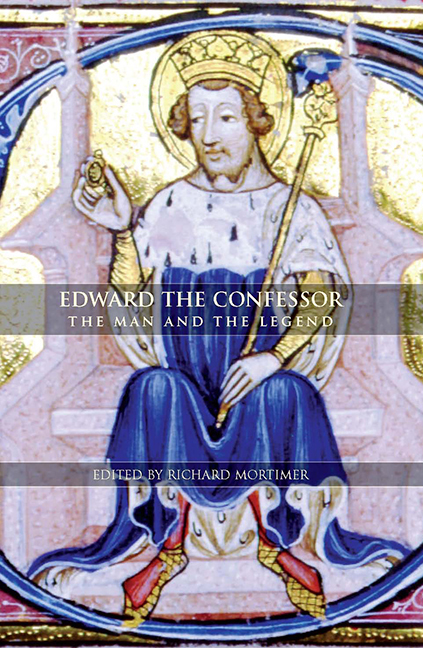Book contents
- Frontmatter
- Contents
- List of illustrations
- List of maps
- Preface
- Abbreviations
- Genealogical table
- 1 Edward the Confessor: the Man and the Legend
- 2 Edward the Ætheling (c. 1005–16)
- 3 Edward and Normandy
- 4 Edward the Confessor and the Succession Question
- 5 Edith, Edward's Wife and Queen
- 6 Edward the Confessor's Westminster Abbey
- 7 New Glimpses of Edward the Confessor's Abbey at Westminster
- 8 Craftsmen and Administrators in the Building of the Confessor's Abbey
- 9 The Sanctity and Canonisation of Edward the Confessor
- Bibliography
- Index
8 - Craftsmen and Administrators in the Building of the Confessor's Abbey
Published online by Cambridge University Press: 25 October 2017
- Frontmatter
- Contents
- List of illustrations
- List of maps
- Preface
- Abbreviations
- Genealogical table
- 1 Edward the Confessor: the Man and the Legend
- 2 Edward the Ætheling (c. 1005–16)
- 3 Edward and Normandy
- 4 Edward the Confessor and the Succession Question
- 5 Edith, Edward's Wife and Queen
- 6 Edward the Confessor's Westminster Abbey
- 7 New Glimpses of Edward the Confessor's Abbey at Westminster
- 8 Craftsmen and Administrators in the Building of the Confessor's Abbey
- 9 The Sanctity and Canonisation of Edward the Confessor
- Bibliography
- Index
Summary
During the course of a detailed evaluation of the roles played by different categories of persons involved in major building projects during the eleventh century, it has become clear that the views previously put forward by the author regarding the craftsmen of the Confessor's abbey are in need of some modification.
The organisation of building works in the eleventh century
FROM A RANGE of contemporary sources, it is possible to establish that major building projects in this period required interaction between persons involved in four key areas of responsibility: patronage, administrative oversight, the supply of materials, and skilled craftsmanship together with general labour. The role of the patron included the authority to define the nature and function of a project and to approve the artistic character of the design; it also entailed the responsibility for ensuring that the project was funded. However, few patrons probably concerned themselves with the lesser task of administering the day-to-day implementation of their project. Such oversight involved the procurement of materials, the hiring of builders, the agreement of contracts, the management of timetables, the supply of accommodation and provisions for the workforce, the expenditure of money, the keeping of accounts, and so forth. Eleventh-century sources provide instances of oversight being delegated to persons answerable to the patron, and these are identified by such terms as custos, exactor, dispensator and so forth. The third area, the provision of materials, certainly involved administrative oversight, but there was far more to it than this. It required access to raw materials, tradesmen with skill in extracting and processing these; and finally the transport of materials to the building site.
The fourth area is that of craftsmanship and labour. The range of craftsmen (artifici) required on a building site might include: builders in stone and mortar (caementarii), stone cutters (lapidum caesori, latomi), sculptors (sculptores), carpenters (carpentarii, lignarii), plumbers (plumbarii), blacksmiths (fabri ferrarium), glaziers (uitrearii), painters (pictores) and so forth. The general term operarii might cover workmen who were either skilled or unskilled.
- Type
- Chapter
- Information
- Edward the ConfessorThe Man and the Legend, pp. 168 - 172Publisher: Boydell & BrewerPrint publication year: 2009

